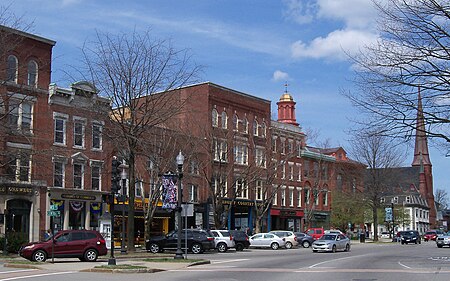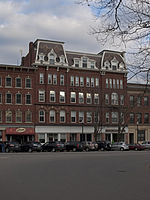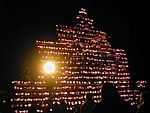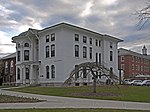Keene, New Hampshire
1736 establishments in the Thirteen ColoniesCities in Cheshire County, New HampshireCities in New HampshireCivil disobedienceCounty seats in New Hampshire ... and 8 more
Keene, New HampshireLibertarianism in the United StatesMicropolitan areas of New HampshirePolitically motivated migrationsPopulated places established in 1736Source attributionUse American English from December 2022Use mdy dates from May 2012

Keene is a city in Cheshire County, New Hampshire, United States. The population was 23,047 at the 2020 census, down from 23,409 at the 2010 census. It is the county seat and the only city in the county. Keene is home to Keene State College and Antioch University New England. It hosted the state's annual pumpkin festival from 1991 to 2014, several times setting a world record for most jack-o'-lanterns on display. The grocery wholesaler C&S Wholesale Grocers is based in Keene.
Excerpt from the Wikipedia article Keene, New Hampshire (License: CC BY-SA 3.0, Authors, Images).Keene, New Hampshire
Main Street, Keene
Geographical coordinates (GPS) Address Nearby Places Show on map
Geographical coordinates (GPS)
| Latitude | Longitude |
|---|---|
| N 42.933611111111 ° | E -72.278055555556 ° |
Address
Main Street
03435 Keene
New Hampshire, United States
Open on Google Maps









